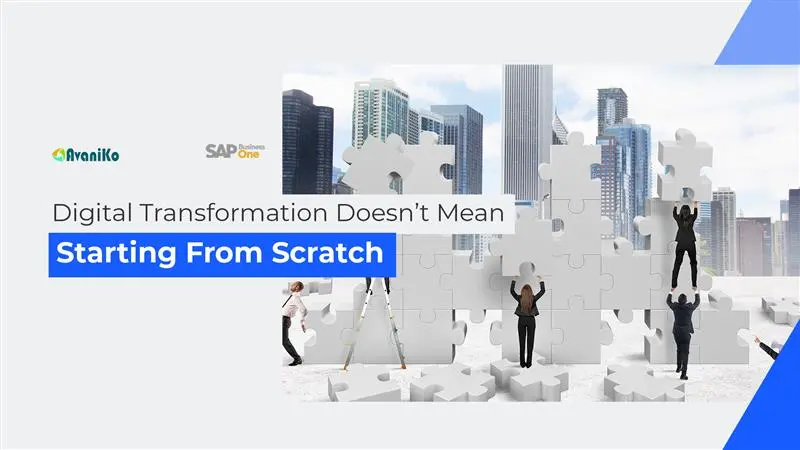Digital Transformation Doesn’t Mean Starting From Scratch

When small or medium-sized businesses hear the term “digital transformation,” it often feels big, expensive, or even scary. Some think it means tossing out everything and starting over with flashy new tech. Here’s another way to consider it
Digital transformation is like renovating your old shop — not demolishing it and building a new one.
You already have a structure. You’ve built it with years of hard work. The goal isn’t to replace what you’ve created — it’s to modernize, streamline, and future-proof it.
Step 1: Inspect the Foundation
Before any renovation, you walk through your space and ask:
- What still works?
- What’s outdated?
- Where are the cracks?
It’s the same with digital transformation. Begin by taking a look at your current tools, processes, and
systems:
- Are you still doing manual tasks that could be automated?
- Are your teams using spreadsheets to track everything?
- Is customer information scattered across different platforms?
Identifying what to renovate begins with this self-assessment.
Step 2: Fix the Wiring (Modernize Your Systems)
Outages, safety issues, and inefficiency can be caused by old wiring in a physical shop.
- Legacy software that crashes or runs slowly
- Systems that don’t talk to each other
- Staff using workarounds because tools don’t fit the job
Digital transformation replaces or integrates these outdated systems. You might:
- Move to cloud-based accounting
- Integrate your CRM with marketing tools
- Centralize data so you’re not copying things across systems
Think of it as upgrading the behind-the-scenes tech so your operations are safer, smarter, and more reliable.
Step 3: Rethink the Layout (Improve How Things Flow)
In a shop renovation, you’d look at how customers and staff move through the space. You might remove clutter, open up space, or make things easier to reach.
Digitally, this means rethinking how your workflows and customer journeys flow:
- Can customers place orders or get support online?
- Can your team collaborate better with shared digital tools?
- Are manual steps slowing down service or delivery?
Digital transformation helps simplify and optimize the way people interact with your business — both internally and externally.
Step 4: Bring In Modern Tools (Add Efficiency & Comfort)
Finally, the fun part: adding tools that make life easier.
Whether it’s a digital POS system, automated inventory tracking, or a mobile-friendly website — new tech adds speed, insights, and convenience.
And just like new lighting or fresh signage can attract more customers, digital upgrades make your business more appealing and competitive in a fast-moving world.
The Result? A Smarter, Stronger, More Efficient Business
Renovating your shop doesn’t erase your history — it builds on your strengths. The same goes for digital transformation. It helps you:
- Save time
- Improve accuracy
- Deliver better customer experiences
- Stay competitive without overspending
Final Thought:
You don’t need to rebuild your business from the ground up.
Start with what you have.
Fix what’s broken.
Upgrade what’s holding you back.
Continue to make progress with one improvement at a time.